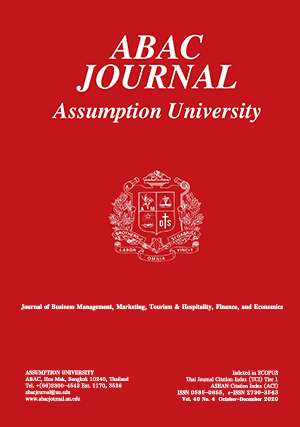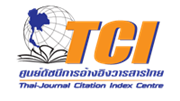Destination Image as A Healing Destination Among Medical Tourists: An Exploratory Case Study of Penang, Malaysia
Abstract
Medical tourism has become adjectival tourism in both developed and developing nations. In recent years, it has gained impetus in Malaysia, which is an ideal hub for medical tourism in Asia due to various competitive factors. Although several key elements have contributed to the growth of medical tourism in the country, few studies have explored the role of destination image in the context of medical tourism. Therefore, this research aims to provide insight into the attributes of destination image in the context of medical tourism in Penang, Malaysia. Qualitative interviews were conducted with 26 patients randomly chosen at selected private hospitals in Penang, and the Malaysia Healthcare Travel Council’s (MHTC) concierge and lounge at Penang International Airport. The findings revealed that the dominant attributes of the ldestination image perceived by medical tourists in Penang are: (a) Hospital Internal Amenities; (b) Influenced and Informed Decisions; and (c) Aesthetics. The paper further discusses Penang's apparent image as a healing destination among medical tourists who travel to Malaysia. This study thus carries implications for healthcare practitioners to enhance and position their healthcare services based on destination image as their source of competitive advantage.
References
Abdullah, A. R., Cheah, S., Mulia, V. B., & Abdul Fatah, I. A. (2019). Factors attracting Indo-nesian medical tourists to Penang. African Journal of Hospitality, Tourism and Leisure, 2019(Special Issue), 1–10.
Alias, N. M., & Zulkifli, N. F. (2011). Critical Success factors for Bumiputera/Muslim Medical Tourism Providers: Solution for Financing Needs Using Islamic Financing Instruments. Per-sidangan Kebangsaan Ekonomi Malaysia Ke VI (PERKEM VI), 2, 184–195.
Aziz, Y. A., Samdin, Z., Awang, K. W., & Abdullah, Z. (2015). Developing an index for medi-cal tourism. International Business Management. https://doi.org/10.3923/ibm.2015.412.415
Beerli, A. and Martín, J.D. (2004), "Factors influencing destination image", Annals of Tourism
Research, Vol. 31 No. 3, pp. 657-681.
Baloglu, S. (1997). and Sociodemographic and Trip Characteristics. Journal of Vacation Market-ing, 3(3), 221–233.
Carrera, P. M., & Bridges, J. F. (2006). Globalisation and healthcare: understanding health and medical tourism. Expert review of pharmacoeconomics & outcomes research, 6(4), 447-454.
Cham, T. H., & Easvaralingam, Y. (2012). Service quality, image and loyalty towards Malaysian hotels. International Journal of Services, Economics and Management, 4(4), 267-281.
Cham, T. H., Cheng, B. L., & Ng, C. K. Y. (2020). Cruising down millennials’ fashion runway: a cross-functional study beyond Pacific borders. Young Consumers. Ahead of Print. Available at https://doi.org/10.1108/YC-05-2020-1140.
Cham, T. H., Cheng, B. L., Low, M. P., & Cheok, J. B. C. (2020). Brand Image as the competi-tive edge for Hospitals in Medical Tourism. European Business Review, 31(1), 31-59.
Cham, T. H., Lim, Y. M., & Aik, N. C. (2015). A Study of Brand Image, Perceived Service Quality, Patient Satisfaction and Behavioral Intention among the Medical Tourists. Global Journal of Business and Social Science Review, 2(1), 14-26.
Cham, T. H., Lim, Y. M., Aik, N. C., & Tay, A. G. M. (2016). Antecedents of hospital brand im-age and the relationships with medical tourists' behavioral intention. International Journal of Pharmaceutical and Healthcare Marketing, 10(4), 412-431.
Cham, T. H., Lim, Y. M, Sia, B. C. Cheah, J. H., & Ting, H. (2020). Medical Tourism Destina-tion Image and its Relationship with the Intention to Revisit: A Study of Chinese Medical Tourists in Malaysia. Journal of China Tourism Research. Ahead of Print. Available at https://doi.org/10.1080/19388160.2020.1734514.
Cheng, B. L., Cham T. H., Micheal, D., & Lee, T. H. (2019). Service Innovation: Building a Sus-tainable Competitive Advantage in Higher Education. International Journal of Services, Economics and Management, 10(4), 289-309.
Cheng, B.L., Mansori, S., & Cham, T. H. (2014). The associations between service quality, corpo-rate image, customer satisfaction, and loyalty: Evidence from the Malaysian hotel indus-try. Journal of Hospitality Marketing & Management, 23(3), 314-326.
Chi, C. G. Q., & Qu, H. (2008). Examining the structural relationships of destination image, tour-ist satisfaction and destination loyalty: An integrated approach. Tourism manage-ment, 29(4), 624-636.
Corbin, J. M., & Strauss, A. (1990). Grounded theory research: Procedures, canons, and evalua-tive criteria. Qualitative sociology, 13(1), 3-21.
Crompton, J. L. (1979). An assessment of the image of Mexico as a vacation destination and the
influence of geographical location upon that image. Journal of Travel Research, 17(4), 18–
Deeparechigi, V., Ridzuan, M., & Cham, T. H. (2018). The Role of Destination Image in Malay-sia’s Medical Tourism Industry. Advanced Science Letters, 24(5), 3479-3482.
Drinkert, A., & Singh, N. (2017). An Investigation of American Medical Tourists' Posttravel Ex-perience. Journal of Hospitality Marketing and Management, 26(3), 335–346. https://doi.org/10.1080/19368623.2017.1241199
Dann, G. M. (1996). Tourists' images of a destination-an alternative analysis. Journal of Travel & Tourism Marketing, 5(1-2), 41-55.
Echtner, C. M., & Ritchie, J. R. B. (1993). The Measurement of Destination Image: An
Empirical Assessment. Journal of Travel Research, 31(4), 3–13.
Foroudi, P., Akarsu, T. N., Ageeva, E., Foroudi, M. M., Dennis, C., & Melewar, T. C. (2018).
PROMISING THE DREAM: Changing destination image of London through the effect of
website place. Journal of Business Research, 83(October 2017), 97–110.
Gartner, W. C. (1994). Image Formation Process. Journal of Travel & Tourism Marketing.
https://doi.org/10.1300/J073v02n02_12
Gunn, C.A. 1972 Vacationscape: Designing Tourist Regions, Taylor & Francis, Washington.
Gunn, C.A. 1988 Vacationscape: Designing Tourist Regions (2nd Ed.), Van Nostrand, NY.
Hassan, N. A., & Hemdi, M. A. (2016). The influence of destination image on medical tourist's intention for future destination choice. Environment-Behaviour Proceedings Journal, 1(1), 178-185.
Herrick, D. M. (2007). Medical Tourism: Global Competition in Health Care. National Center
for Policy Analysis (Vol. 304).
Heydari, M., Yousefi, M., Derakhshani, N., & Khodayari-Zarnaq, R. (2019). Factors Affecting
the Satisfaction of Medical Tourists: A Systematic Review. Health Scope, 8(3), 6–8.
https://doi.org/10.5812/jhealthscope.80359
Hong, E. H., Budi, A. S. L., & Nilawati, L. The Comparison of Hospital Brand Image Between Indonesia and Malaysia and The Causes. Journal of Marketing Advances and Practices, 2(2), 33-44.
Khan, M. J., Chelliah, S., & Haron, M. S. (2016). Medical tourism destination image formation
process: A conceptual model., 9(2 OP-International Journal of Healthcare Management.
Jun2016, Vol. 9 Issue 2, p134-143. 10p.), 134. Retrieved from
http://search.ebscohost.com/login.aspx?direct=true&site=eds
Kim, S., & Yoon, Y. (2003). The Hierarchical Effects of Affective and Cognitive Components
on Tourism Destination Image The Hierarchical Effects of Affective and Cognitive
Components on Tourism Destination Image. Journal of Travel & Tourism Marketing, 14(2),
–22.
King, C., Chen, N., & Funk, D. C. (2015). Exploring Destination Image Decay: A Study of Sport
Tourists' Destination Image Change after Event Participation. Journal of Hospitality and
Tourism Research, 39(1), 3–31.
Krishnan, T., & Chelliah, S. (2013). Medical Tourism Research : A Conceptual Framework Of
Emerging Business Strategies In Healthcare Industry, (February), 364–376.
Lim, Y. M., Cham, T. H., & Sia, B. C. (2018). Medical Tourists' Behavioral Intention in relation to Motivational Factors and Perceived Image of the Service Providers. International Aca-demic Journal of Organizational Behavior and Human Resource Management, 5(3), 1-16.
Lim, X. J., Cheah, J. H., Cham, T. H., Ting, H., & Memon, M. A. (2020). Compulsive buying of branded apparel, its antecedents, and the mediating role of brand attachment. Asia Pacific Journal of Marketing and Logistics, 32(7), 1539-1563.
Manaf, A., Hazilah, N., Ghazali, M., Johari, R., Marikar, & Kadar. (2011). Positioning Malaysia in Medical Tourism, 2008, 1–21.
Manaf, N. H. A., Hussin, H., Kassim, P. N. J., Alavi, R., & Dahari, Z. (2015a). Medical tourism service quality: finally some empirical findings. Total Quality Management and Business Ex-cellence, 26(9–10), 1017–1028.
Marshall, M. N. (1996). Sampling for qualitative research. Family practice, 13(6), 522-526.
Martineau, P. (1958). Social Glasses and Spending Behavior. Journal of Marketing, 23(2), 121
Mun, W. K., Peramarajan, V., Arshad, T., & Nuraina, T. (2015). Medical Tourism Destination
SWOT Analysis : A Case Study. SHS Web of Conferences12, 7(2014), 8. https://doi.org/10.1051/ shsconf /201412010 37
Nuradzimmah & Ting (2020, May 1st) Malaysia's Health DG among 'doctors at the top' in COVID-19 fight, says China's TV network. The New Strait Times. Retrieved from https://www.nst.com.my/news/nation/2020/05/589140/chinese-experts-impressed ma-laysias-handling-covid-19-nsttv
Pike, S., & Ryan, C. (2004). Destination positioning analysis through a comparison of cognitive,
affective, and conative perceptions. Journal of Travel Research, 42(4), 333–342.
Prayag, G. (2009), "Tourists' evaluations of destination image, satisfaction, and future behave
ioral intentions – the case of Mauritius", Journal of Travel & Tourism Marketing, Vol. 26
No. 8, pp. 836-853.
Prebežac, D., & Mikulić, J. (2008). Destination image and key drivers of perceived destination
attractiveness. Market-Tržište, 20(2), 163-178.
Rubin, H. J., & Rubin, I. S. (2011). Qualitative interviewing: The art of hearing data. Sage.
Sarwar, A. (2013). Medical tourism in Malaysia: Prospect and challenges. Iranian Journal of Pub-lic Health, 42(8), 795–805.
Tang, C. F., & Tan, E. C. (2015). Does tourism effectively stimulate Malaysia's economic growth? Tourism Management, 46, 158–163. https://doi.org/10.1016/j.tourman.2014.06.020
Tasci, A. D. A., & Gartner, W. C. (2007). Destination image and its functional relationships. Journal of Travel Research, 45(4), 413–425. https://doi.org/10.1177/0047287507299569
Wang, Y. (2017). Expectation, Service Quality, Satisfaction, and Behavioral Intention – Evi-dence from Taiwan' s Medical Tourism Industry. Advances in Management & Applied Eco-nomics, 7(1), 1–16.
Yilmaz, Y., Yilmaz, Y., Îçigen, E. T., Ekin, Y., & Utku, B. D. (2009). Destination image: A comparative study on pre and post trip image variations. Journal of Hospitality and Leisure Marketing, 18(5), 461–479.
Yin, R. K. (2002). Case study research: Design and methods. Thousand Oaks, CA: SAGE Publi-cations
Yin, R. K. (2017). Case study research and applications: Design and methods. Sage publications.
Zarei, A., & Maleki, F. (2019). Asian medical marketing, a review of factors affecting Asian medical tourism development. Journal of Quality Assurance in Hospitality and Tourism, 20(1), 1–15.
Zhang, J., Wu, B., Morrison, A. M., Tseng, C., & Chen, Y.-C. (2016). How Country Image Af-fects Tourists Destination Evaluations: A Moderated Mediation Approach. Journal of Hos-pitality & Tourism Research, XX(X), 1–27.
Zulfakar, Z. A., & Rahim, F. A. (2019). Malaysia vs Thailand Millennial Travellers Understand-ing the Behaviour and Pattern of Young Tourists. Journal of Marketing Advances and Prac-tices, 1(2), 25-37.





